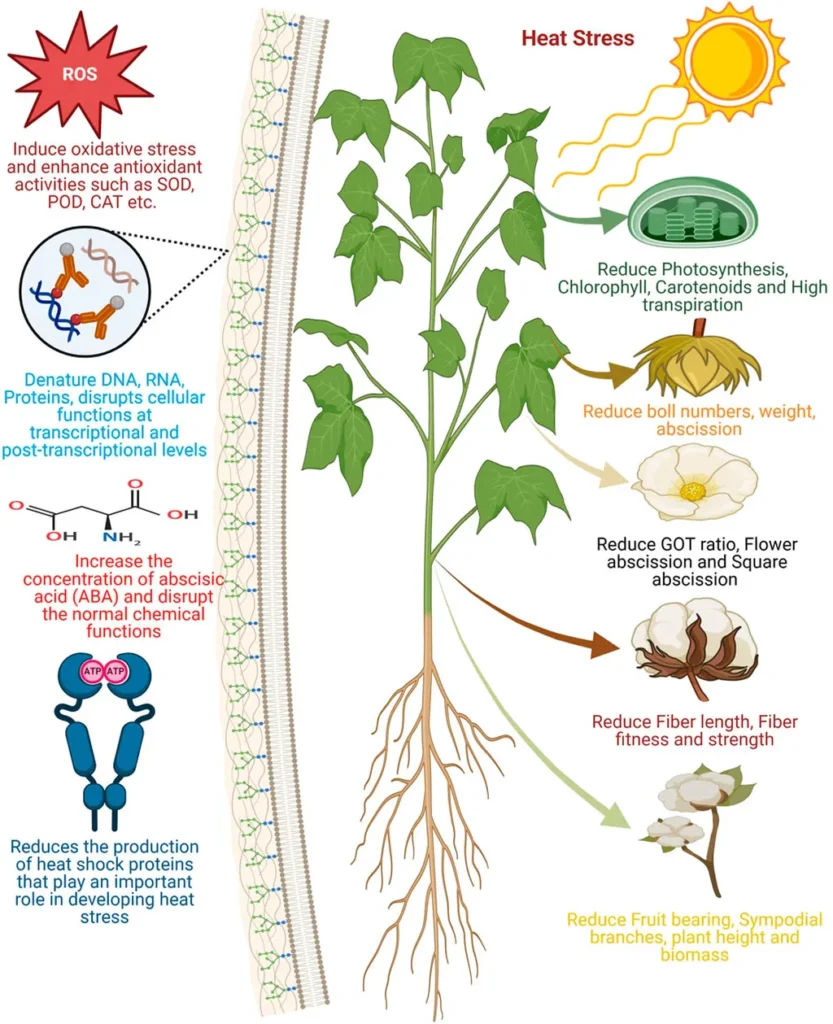In the heart of Pakistan, researchers have uncovered a genetic treasure trove that could revolutionize cotton farming, particularly in the face of climate change. Umar Akram, a scientist at the Institute of Plant Breeding and Biotechnology at Muhammad Nawaz Shareef University of Agriculture Multan, has led a groundbreaking study on the Voltage-dependent Anion Channels (VDACs) in upland cotton (Gossypium hirsutum L.), published in the journal ‘Frontiers in Plant Science’ (which translates to ‘Frontiers in Plant Science’ in English).
VDACs are proteins present at the outer membrane of mitochondria, acting as crucial gatekeepers in plant cells. They are involved in various processes, including stress response, signal transduction, and cellular metabolism. Akram’s team identified 18 GhVDAC genes in upland cotton and mapped their distribution across the genome. “We found that these genes are randomly distributed and exhibit diverse intron-exon structures,” Akram explained.
The study also delved into the evolutionary relationships of these genes. By constructing a phylogenetic tree using VDAC genes from 14 different species, the researchers found that the cotton VDAC genes were distributed across four clades, with a significant number clustered in clade IV. This evolutionary insight could be pivotal for understanding how cotton adapts to environmental stresses.
One of the most compelling findings was the identification of ten motifs within these genes. Notably, motif 9 was absent in five specific GhVDAC genes, while motif 10 was present in only two. “These motifs are like genetic switches that could turn on or off certain responses to stress,” Akram elaborated. Understanding these motifs could be key to engineering cotton plants that are more resilient to drought and salt stress.
The researchers also analyzed the promoters of these genes, revealing cis-elements involved in hormone and stress responses. This suggests that GhVDAC genes could be regulated by various environmental cues, making them prime candidates for genetic modification to enhance stress tolerance.
Synteny and circos analysis further revealed orthologous gene duplication events and evolutionary relationships, providing a comprehensive picture of the VDAC gene family’s evolution in cotton. “This is not just about understanding the past; it’s about shaping the future,” Akram said. “By identifying these genes and their functions, we can lay the groundwork for breeding programs that develop cotton varieties resistant to drought and salt stress.”
The study’s implications extend beyond academia. In an era of climate change, where droughts and salt stress are becoming increasingly common, developing stress-resistant cotton varieties could be a game-changer for the agricultural industry. This could lead to more stable crop yields, reduced water usage, and improved soil health, all of which are critical for sustainable agriculture.
Akram’s research also opens up new avenues for exploring the role of VDACs in other crops. “If we can understand how these genes work in cotton, we can apply this knowledge to other plants,” Akram suggested. This could pave the way for a broader range of stress-resistant crops, benefiting farmers and consumers alike.
In the quest for sustainable agriculture, Akram’s study is a significant step forward. By unraveling the genetic secrets of cotton, researchers are not only enhancing our understanding of plant biology but also paving the way for innovative solutions to some of the most pressing challenges in agriculture today. As the world grapples with the impacts of climate change, this research offers a beacon of hope for a more resilient and sustainable future.

